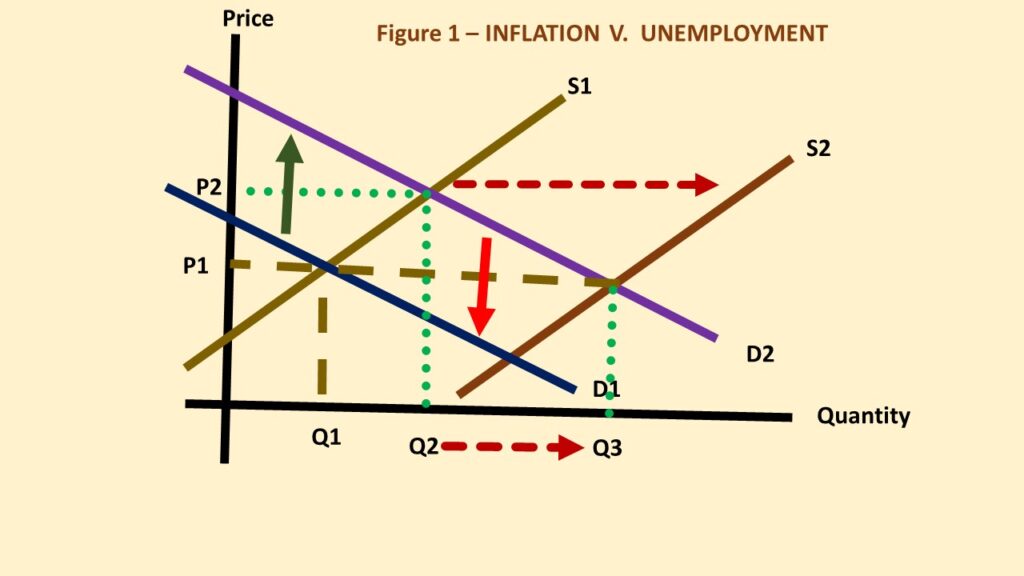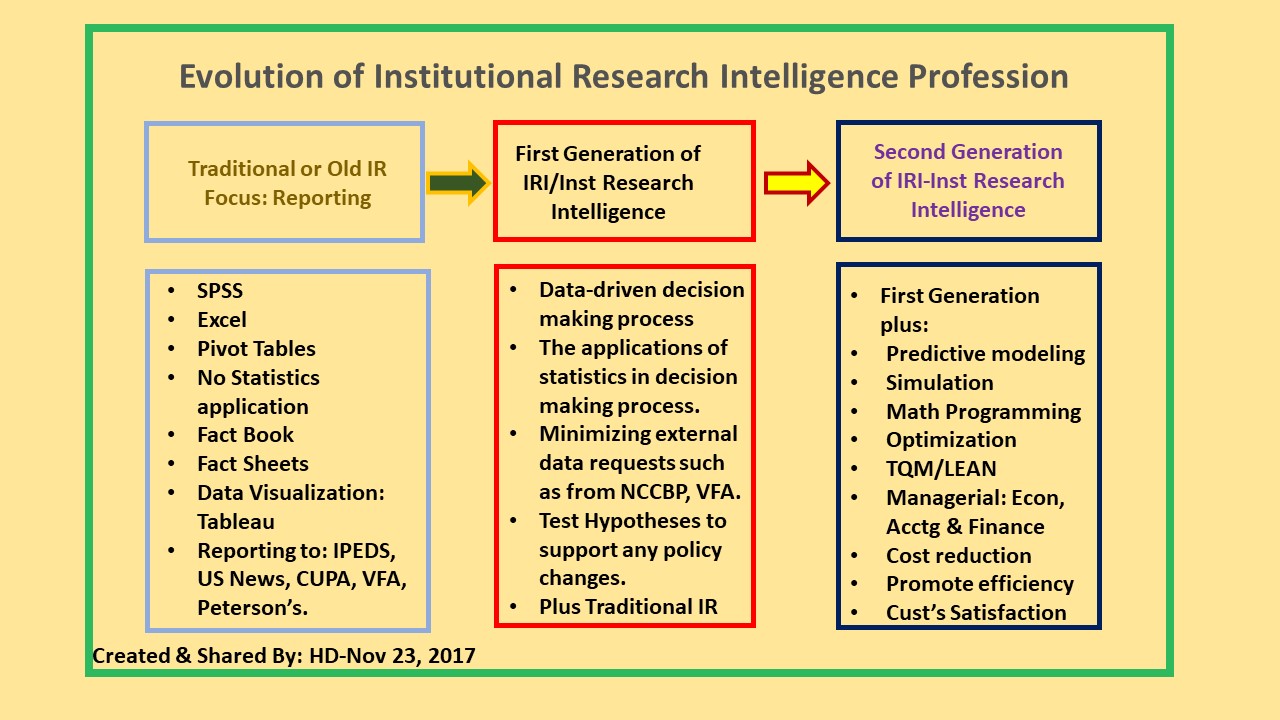
For those who have a chance to watch (click the following link: Senator Elizabeth Warren’s interview with Jake Tapper of CNN on March 22, 2023) regarding the interest rate hike will notice similar analyses and conclusions with what has been posted in this site weeks ago.
Fed’s cheap-money policy for years have caused the aggregate demand curve (line) moved from D1 to D2, as shown by dark-green arrow. Consequently, driving the aggregate price up from P1 to P2. As inflation brewed stronger, the Central Bank tried to push it back through monetary policy (increase interest rate). With the objective to lower the aggregate demand back toward D1, as shown by the red arrow. This has been a traditional approach, but there are current important events in the world as well as continuous depleting of world resources that drove INPUT price up at unprecedented pace (example: increasing oil price, natural disasters such as floods, droughts and human-made wars), and negative effects of outsourcing starts biting the US corporations, which in turn increase the output (product) selling price in the consumer markets.
Therefore, the current Central Bank policy which is considered less than optimal (at least this time, and it further proved that the 3rd US GDP grew positively) if pursue, in no doubt will increase unemployment in the US. AAEA has discussed these negative consequences in its recent BLOG. Increasing unemployment is the last thing that the Uncle Sam is ready for, especially under the current global uncertainty. Folks will be happy to be employed, and pay higher price at the grocery stores than being unemployed. AAEA’s analyses were confirmed recently (Oct 25?) by US Labor Secretary, M. Walsh who said (quoted here) “We definitely have to bring down inflationary pressures,” Walsh said at the CNBC Work Summit, but he added that the way to do it isn’t layoffs“. Confirmations are also received from an Ohio lawmaker, third-quarter GDP data, as well as from the Banking industry.
AAEA has discussed these related topics in several analyses shown below. Please click each article to read more.
- Data and Midterm Elections.
- Unemployment and Inflation: A Choice That Americans Have To Make.
- The World Cannot Avoid Inflation. It Is A New Normal.
- So, What Is The Verdict: Lower Inflation V. Unemployment?
- The Supporters of Employment Have Won.
- Immigration, Inflation and Unemployment.
- Labor Shortages: Analyzing From the Industry Point Of View.
- Again, AAEA Analyses Have Helped Predicting the DOW Movements.
- Outsourcing Strategies: Good for Corporations, Bad for Countries.
- Will The Fed Hike Interest Rate After November 2-3 Meeting?
The macro economic conditions may have been the contributing factors to the inflation. However, increasing input prices are the stronger driving factors of general price increases in the US, at this time. Input price increases have been caused by increasing demand due to population growth, climate change, as well as depleted supply of non-renewable resources. Oil that has been pumped out of the earth cannot be reproduced. On October 5, OPEC decided to lower their output target by 2 million barrels per day (Reuters). Among other reasons, maximizing oil revenue could be seen as the motivation for this move. Surely, this development will push input price to move even higher.
Another Note: IRI & Past Research On Student Loans
Nine years ago, the Association introduced the new idea to better manage higher ed institutions in the US, called IRI Analytics. The traditionalists were skeptical and they lost the best opportunities to get ahead of the curve and today the nightmares became realities. IRI Analytics–is the new mindset, approach and new ways to cope with ultra competitive business environment. It can be implemented successfully at institutions supported by Data Scientists with IRI Analytics knowledge and skills, Data Mining experience and Big Data expertise.
After the first IRI/Education Analytics paper and book were published and presented, practically the concept became one of the most important new mindset ever developed in the Institutional Research, Planning & Effectiveness and Analytics profession. Gladly, many entities have benefitted by these new approaches and they have developed and sold canned softwares and programs. Our earlier research results, analyses and predictions have become a reality and reconfirmed further by Moody’s Investor Service’s recent study.
US higher education institutions do not have other choices, but to appoint a competent leader or to revitalize and equip their current decision makers and leadership with necessary skills, knowledge and capabilities beyond the usual PR. Please examine this Table below, then you, the readers will know why.
Adding the IRI Analytics.V2 in its current strategic arsenals is a must to successfully navigate the sea of landmines.

Why US higher ed needs to be revitalized? On November 8, 2013, Harvard Gazette published its interview with Harvard University’s Vice President and CFO. When he was asked about “ complicated choices” that Harvard has to make related to a deficit of $34 million, he replied “It’s (the current business model—added by AAEA) just not a sustainable model. And I think the entire higher education industry is feeling the need to move away from that way of doing business” (bold added by AAEA).
Your participation on US College Education Cost Research is needed. Please click the following Link ===>SURVEY<===
What Are We Doing?
To improve efficiency of US colleges as required in the new era. Both the current system and its cultures, policies and strategies are unsustainable in the new world of Competitions and Regulations (This assessment has been written many months before the Gazette’s interview with Harvard University’s CFO). Two options left, to embrace the changes or be wiped out from the competitive map.
US colleges’ survival studies can be found here (public colleges~1454 pages pdf file) and here (non-profit higher learning institutions~1475 pages pdf file). The results show US colleges’ survival depends heavily on the government’s support. Aids reduction will increase the probability that they go out-of-business.
Applying the IRI Analytics, AAEA recently finished a study on financially troubled US colleges. Please click here to find out more.
